You might not know where to start when it comes to learning how to run faster as a trail runner. But really all you need to do is kick down and add a little pace to your workouts, your body will thank you for it.
Fortunately, because of the surfaces we prefer to tackle on a regular basis, trail runners tend to lean towards this love of speed – even if we don’t realise it! Varying terrain, running uphill and running downhill, and constantly changing environments, continually work your muscle strength, aerobic capacity, as well as other elements such as balance and mobility.
So good news – we’re all actually a fair way along that ‘speed’ road without even thinking about it. But don’t rest on your laurels. Improving your running must involve testing yourself otherwise you’ll plateau or worse, go backwards. Think of training as breaking down muscle with a hard session, then resting and allowing it plenty of time to rebuild, but this time stronger.
How to implement speed workouts into your training
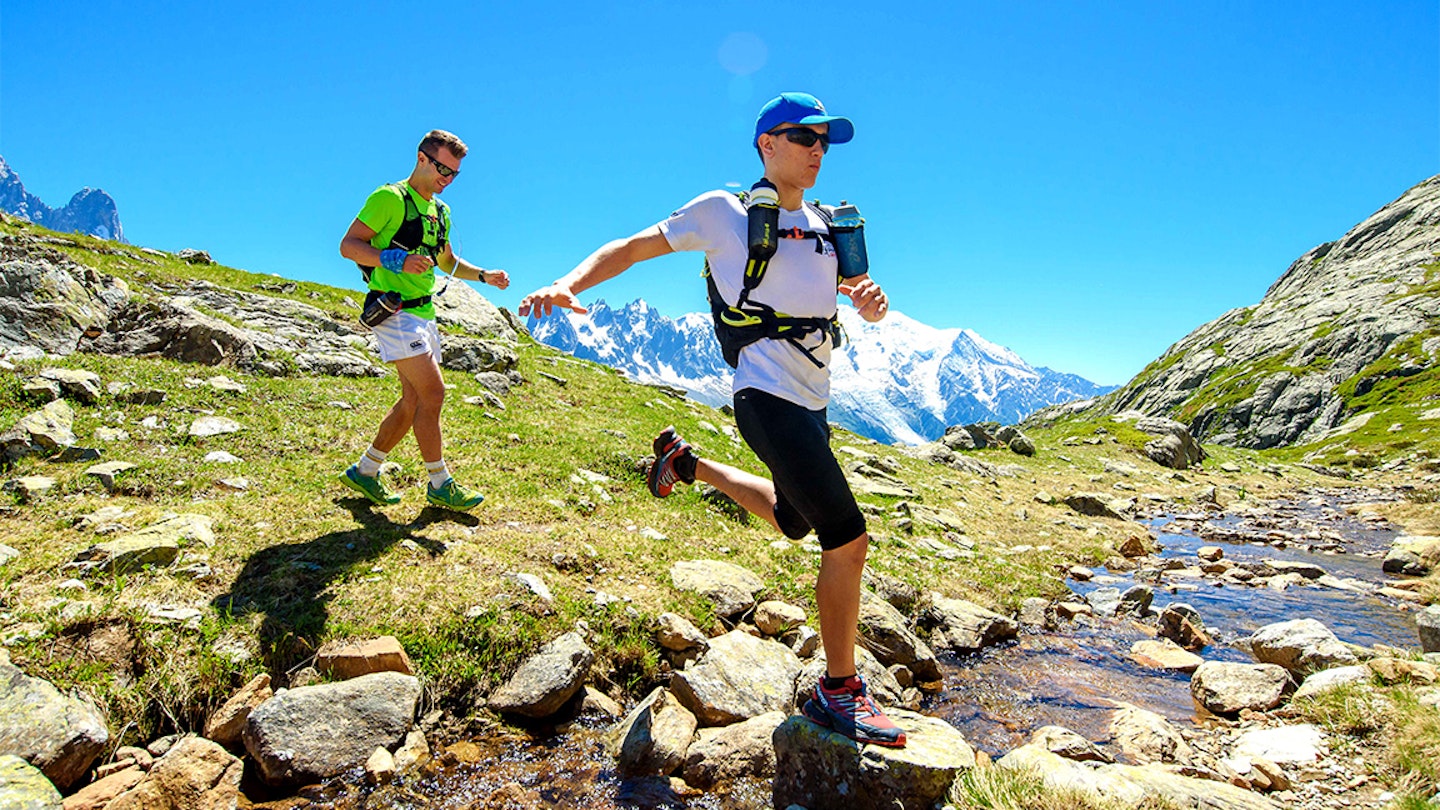
Trail running was made for a HIIT session. Find a hill, run hard up it, ease off for 20sec, see a tree, sprint hard, and so on.
Like anything that’s good for you, however, the real problem is actually implementing it. “I can understand why runners are reluctant to add specific workouts to their schedule,” says Pro Vice Chancellor and Professor of Applied Sport Science John Brewer, by his own admission a man who prefers heading out for a lazy long run to a short, hard session.
“But even if it’s completing a slightly faster workout just once every 10 days or so, your body will perform so
much better. Running the same pace every day results in a plateau and no one really wants that.” If nothing else, that lack of progress can damage your enthusiasm or even, dare we say it, lead to you missing the odd run here and there. “We’re not talking going to the track here. Instead use the landscape around you and mix and match,” he adds.
As Prof John Brewer’s quick to point out, it’s that change of pace – getting out of the comfort zone for a short while – that is so important in everyday running. “Faster running requires more energy, which can be met either aerobically – where oxygen is used within the muscle to produce energy – or anaerobically, where energy is produced without oxygen being present. This, however, will result in rising levels of the fatigue-inducing substance, lactic acid,” he says.
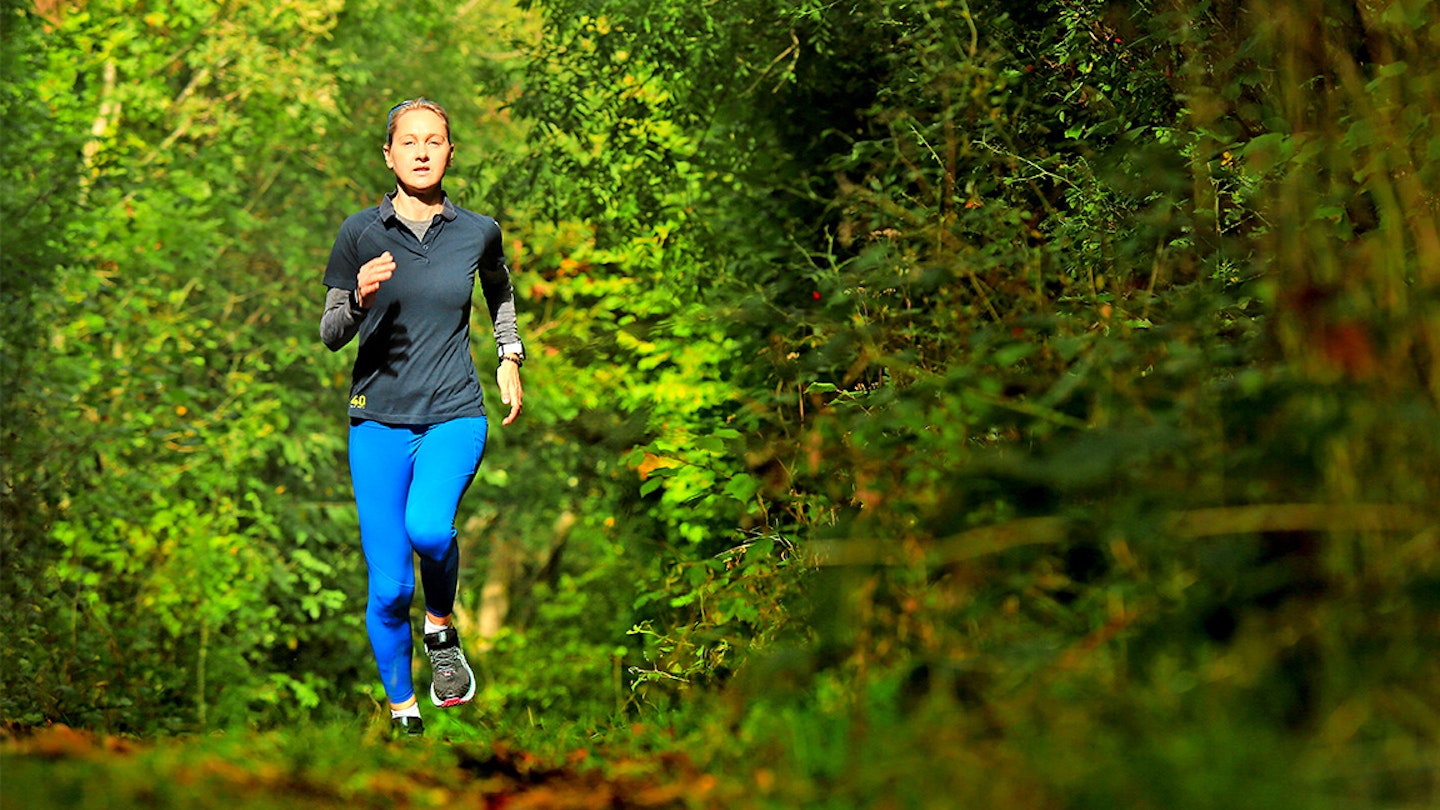
Speed training helps develop both of these systems, so that when faced with the need to run more quickly, the body has adapted either by improving its oxygen uptake and transport mechanisms, or by developing an improved tolerance for lactic acid.
Speed training will contribute to improved performance in both of these adaptations, so it is vital that it is an integral part of your running programme. Put simply, you’ll become stronger and you’ll be able to utilise oxygen much more efficiently, which in turn will make longer, slower runs easier.
Of course, such a major restructuring of your internal system means it will take a bit of time. Changes tend to take around six weeks, but only as a part of a well-thought-out programme. You can’t just bash out intense workout after intense workout – that will breakdown muscle and eventually wipe you out.
Think of your week like this: roughly speaking, 80% of your time should involve easy running at whatever pace you feel comfortable with – chatting to mates, stopping to take in the magnificent views and so on. However, 20% needs to be focused efforts doing interval sessions.
Strength exercises to improve your running speed
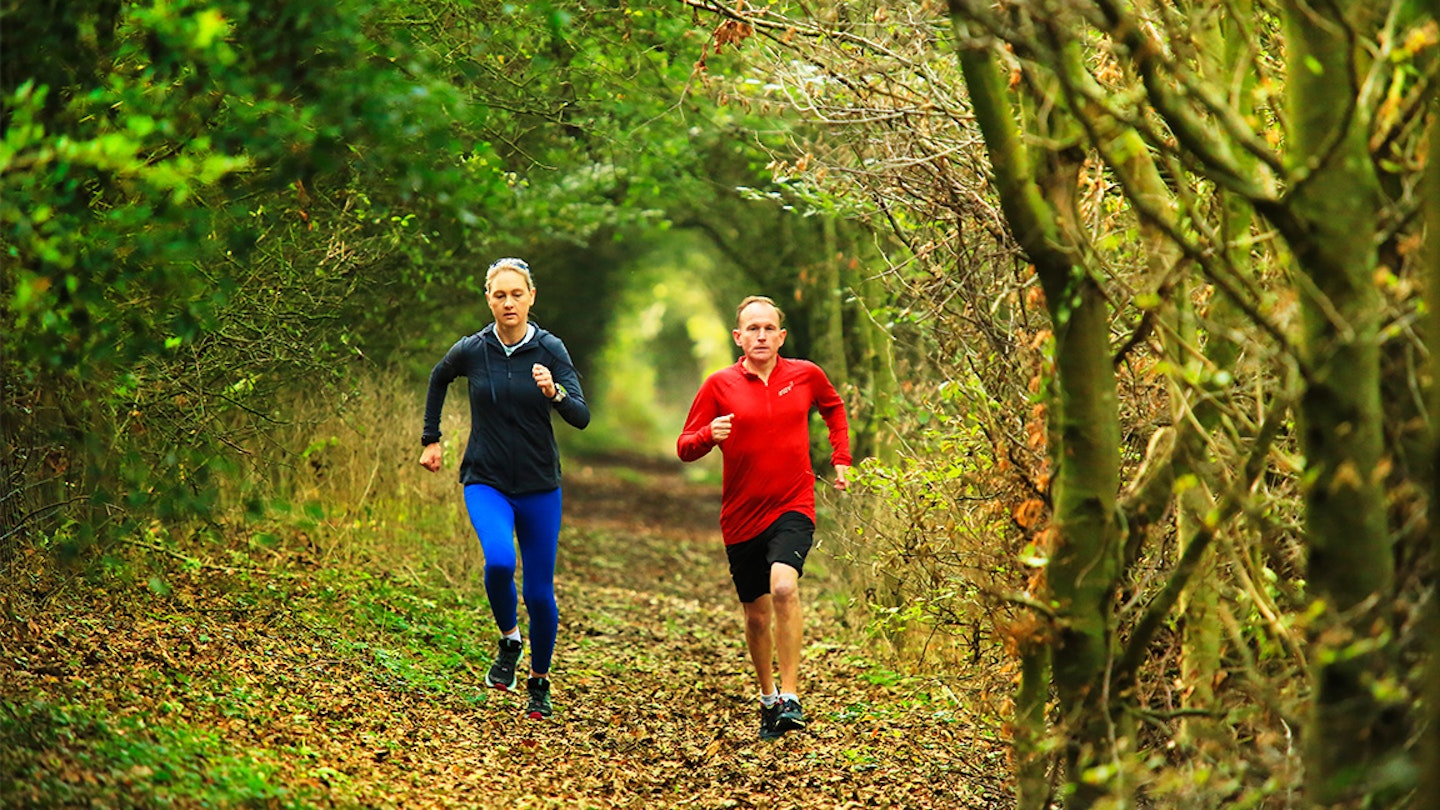
You wouldn’t race your everyday commuter car without a little tinkering. Likewise, apply the same rules to your body.
Strength training is almost always linked to speed work and well worth the 20 minutes or so you need to speed on it a week to reap its benefits. As endurance runners, we’re notoriously reluctant to do all that ‘other’ stuff, but when it comes to running faster and generally improving mobility nothing can beat a little at-home training.
Here’s some exercises we have found to be really useful over the years – essentially working to improve core strength. Of course, there are many more but it’s also useful to think of some of the running you already do as strength work.
Hill training, for instance, is fabulous for working core along with key areas when it comes to mobility – ankle, quads, shoulders. You will also benefit from five minutes or so of drills after one run a week, followed by half a dozen run-throughs over 100m working on relaxed form.
Other strength type sessions that are a bit different would include stairs – just like those boxing movies. Or if you’re feeling strong try this one that we saw while on a training camp in Lanzarote: 10x100m sprinting, but for the recovery do 10 sit-ups and 10 press-ups. We tried it and can report it’s tough!
1. Step-ups
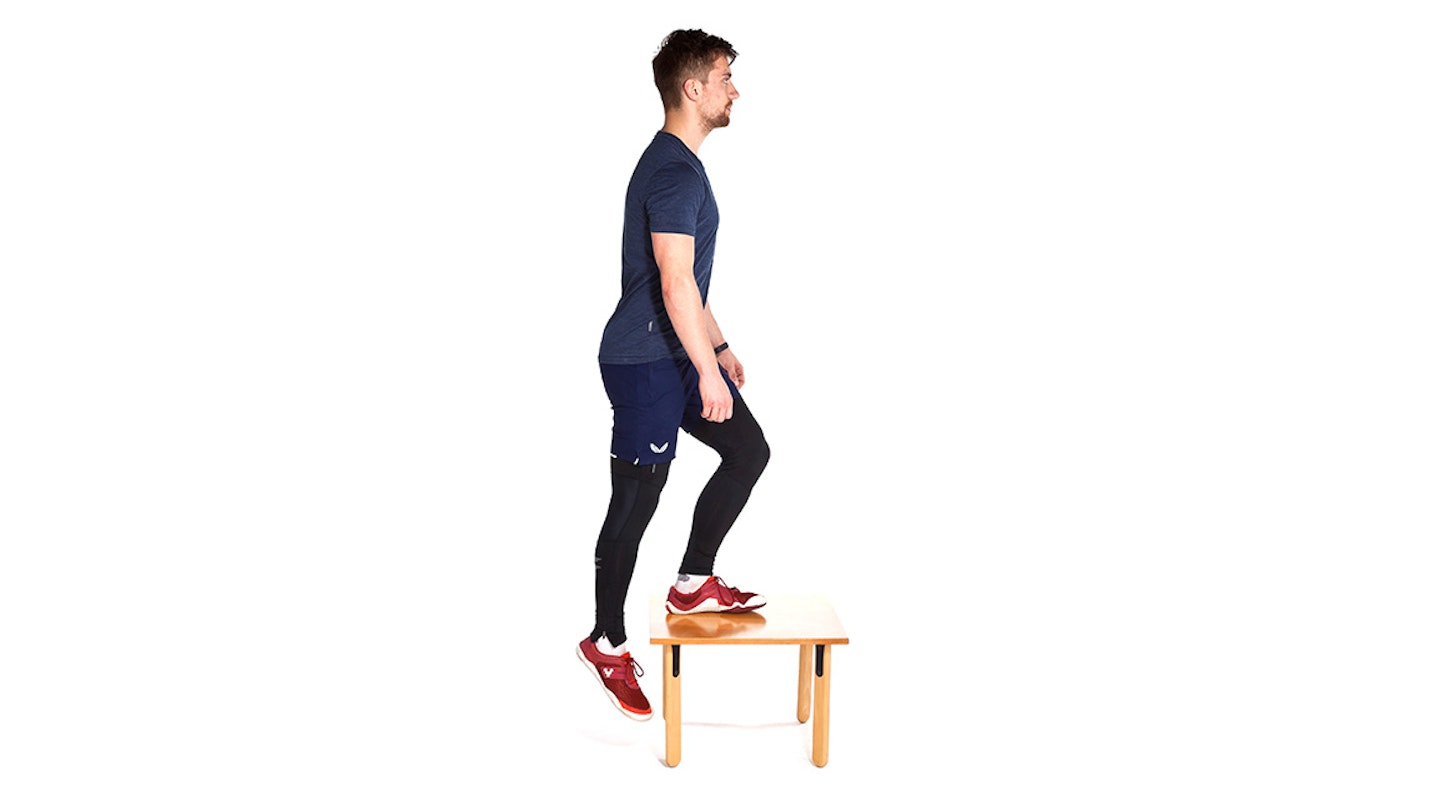
Find a bench or step of challenging height and step on it and off it, alternating your leading leg. Make sure you step fully up and stand tall before stepping back off.
Benefit: Develops hill- climbing specific strength, power and muscular endurance.
2. Plank
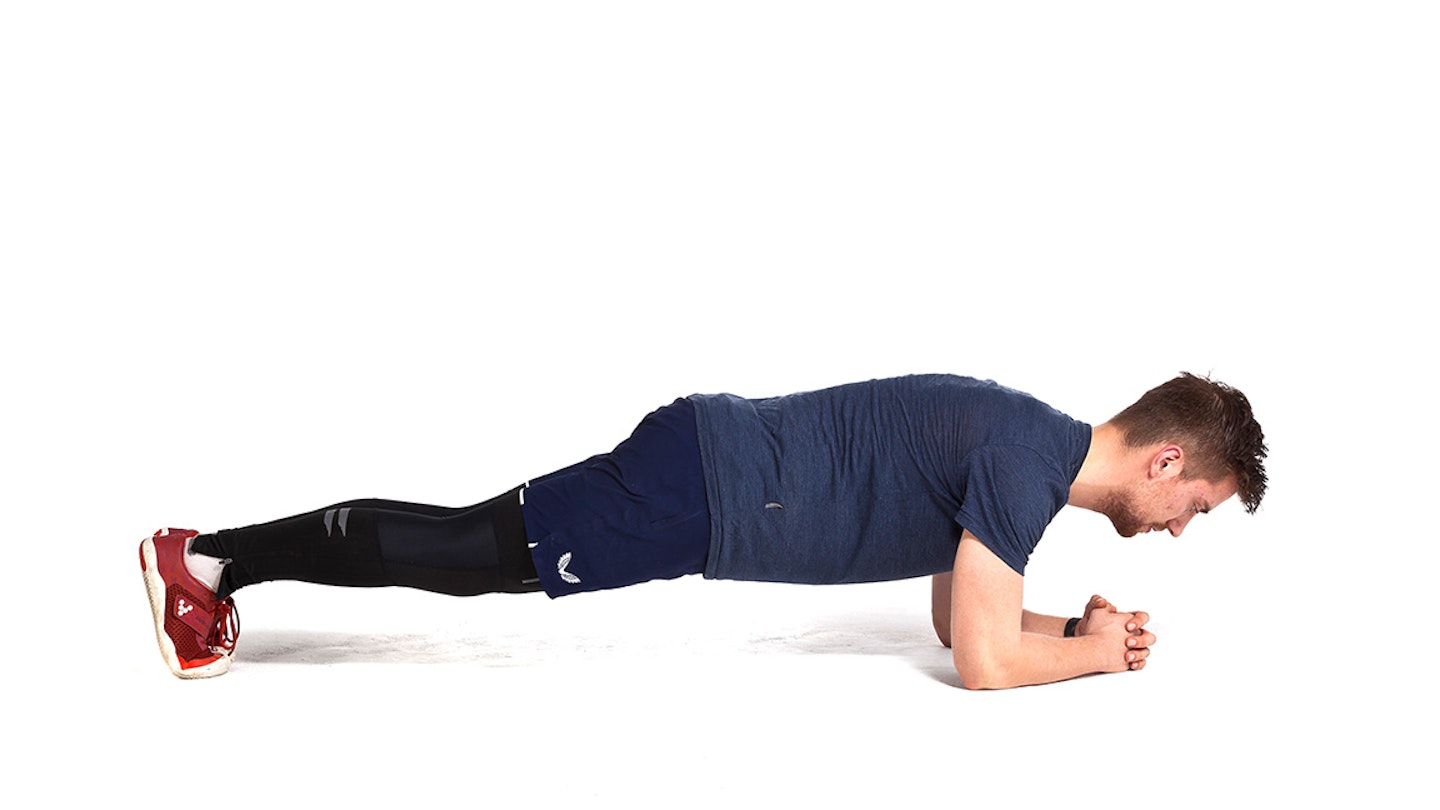
Adopt a press-up position but support your weight on your elbows and forearms. Focus on keeping your whole body straight, like a plank, and engaging the muscles of your trunk.
Benefit: Best exercise for developing functional trunk stability and strength.
3. Side plank
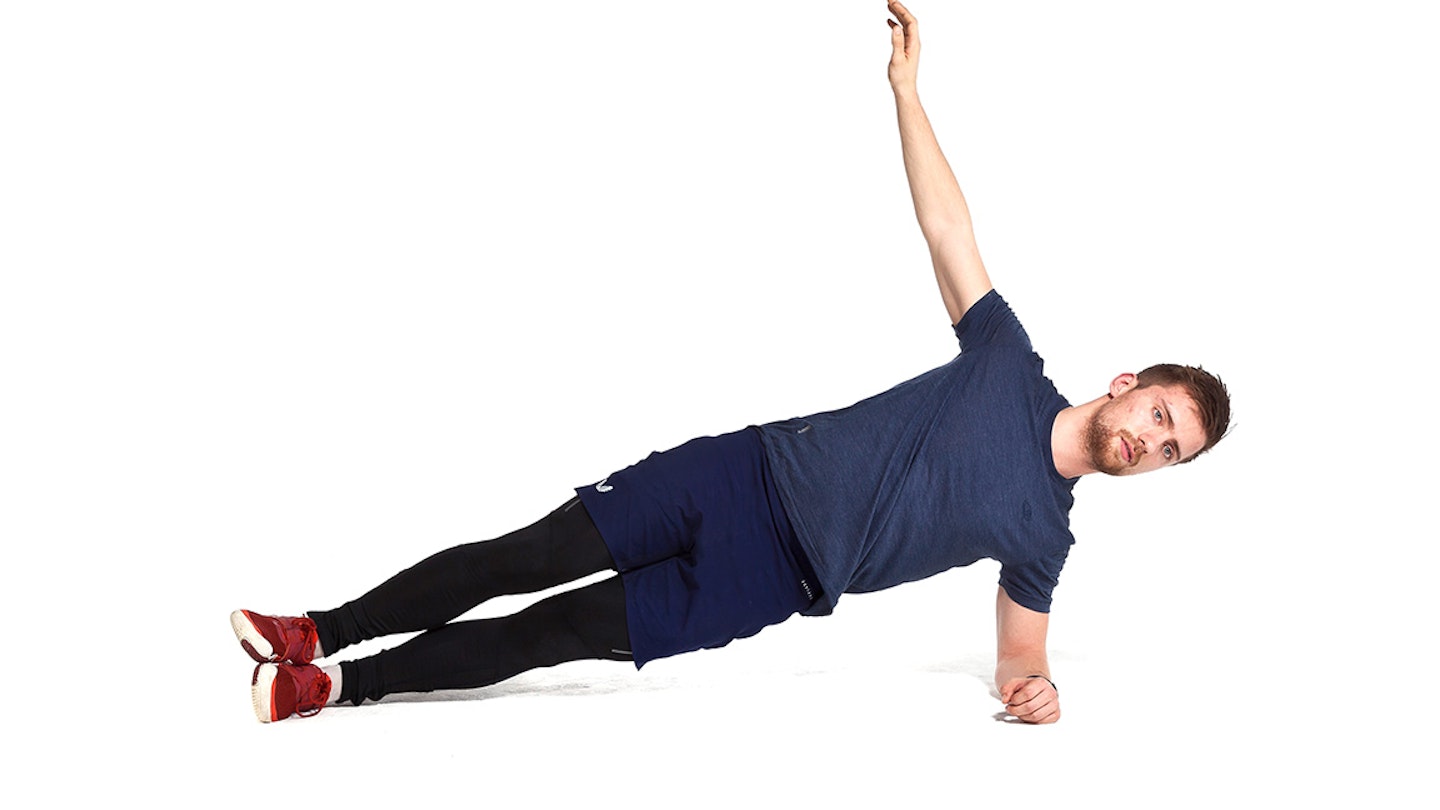
Lie on your side, stack your feet one on top of the other, lift your hips off the floor and support your weight on your elbow, forearm and outside of the bottom foot. Hold a strong position without sagging or unbalancing forwards or back.
Benefit: Work the obliques, which are important to minimising inefficient body roll when running.
4. Walking lunges
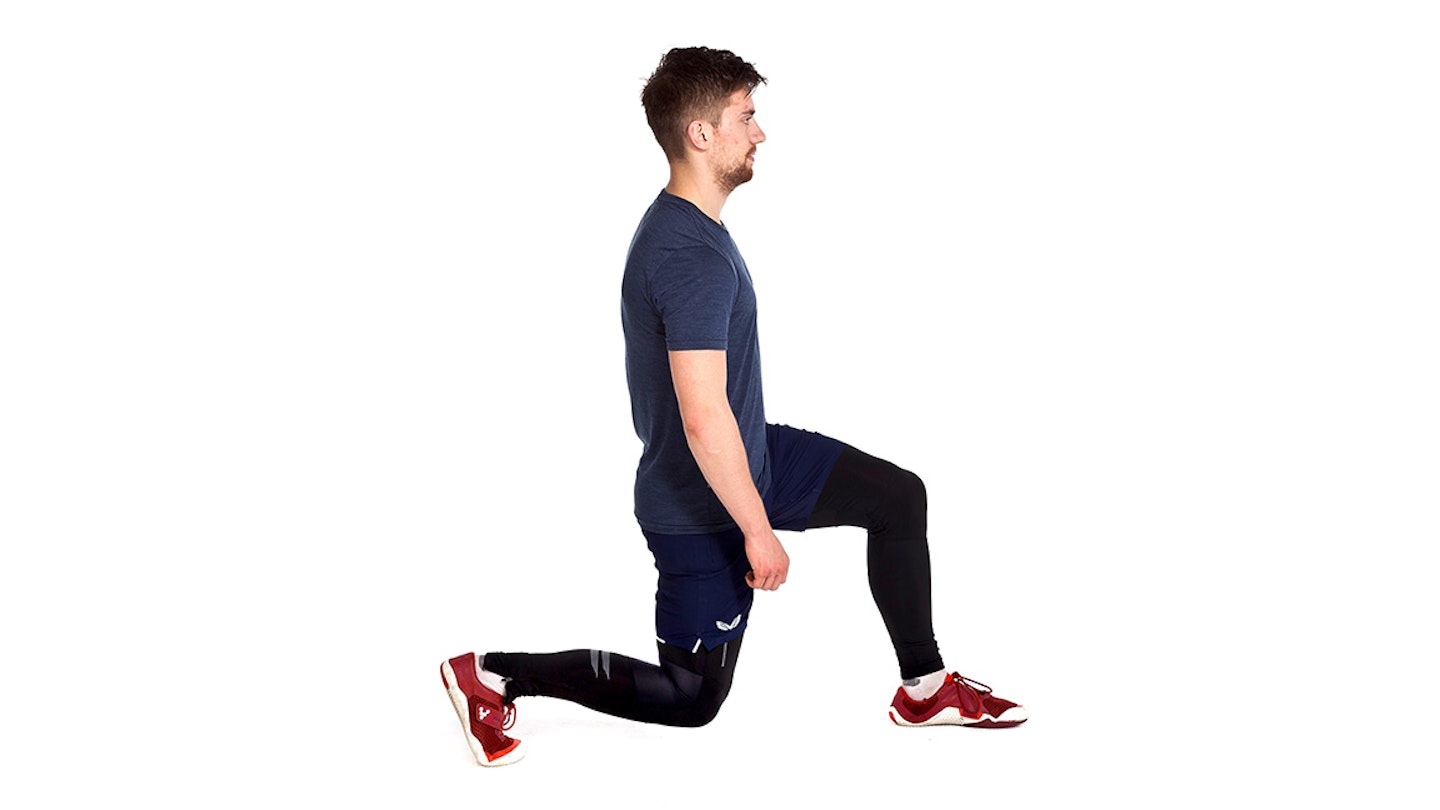
Standing with feet hip width apart, take a slightly exaggerated step forward. Sink into a lunge, bending both front and rear leg to 90 degrees, almost touching the ground with your rear knee. Drive forward and up and then straight into a lunge with the other leg.
Benefit: Excellent for quads, hamstrings, gluts and for developing balance
5. Side squat
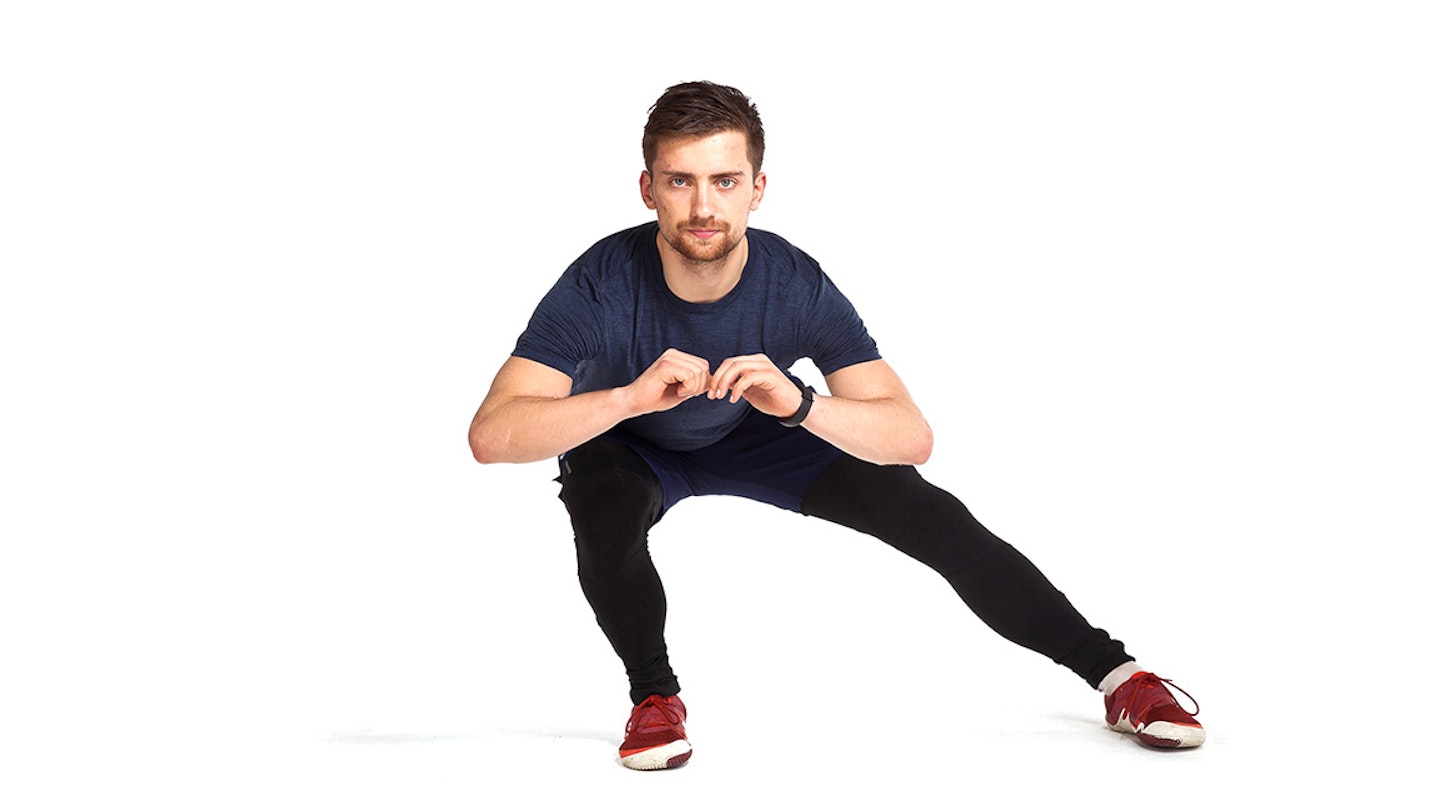
Adopt a wide-standing stance. Keeping one leg straight, squat down by bending the other leg. Keep your head up and imagine you’re sitting back onto a chair. Alternate from side to side.
Benefit: Develops lateral strength and stability, which is often lacking in runners.
Top image: Jordi Saragossa
Don't forget to subscribe to the Trail Running Newsletter to get expert advice and inspiration delivered to your inbox!

